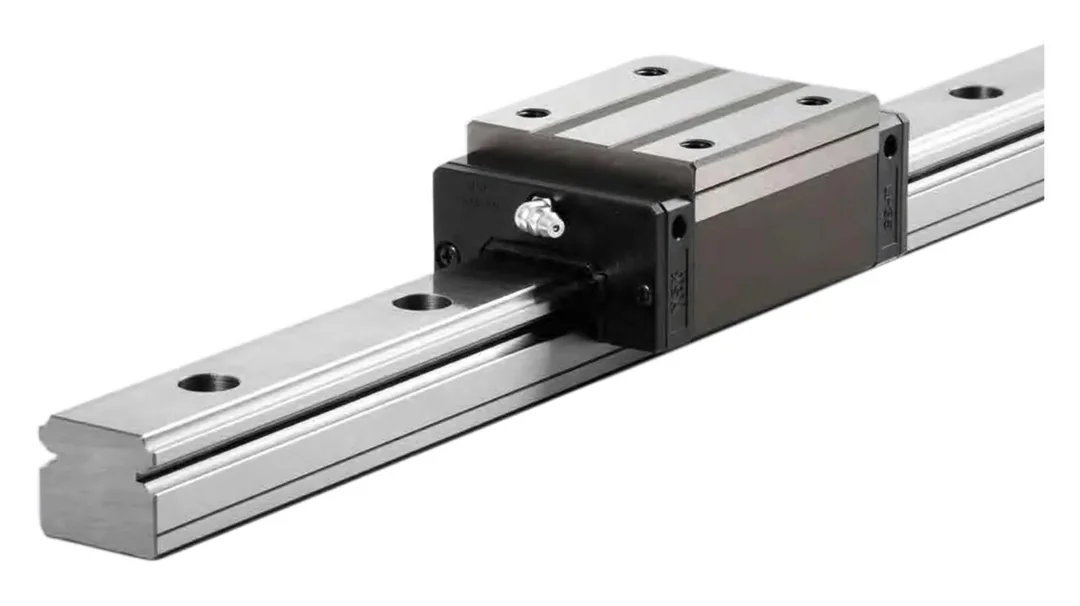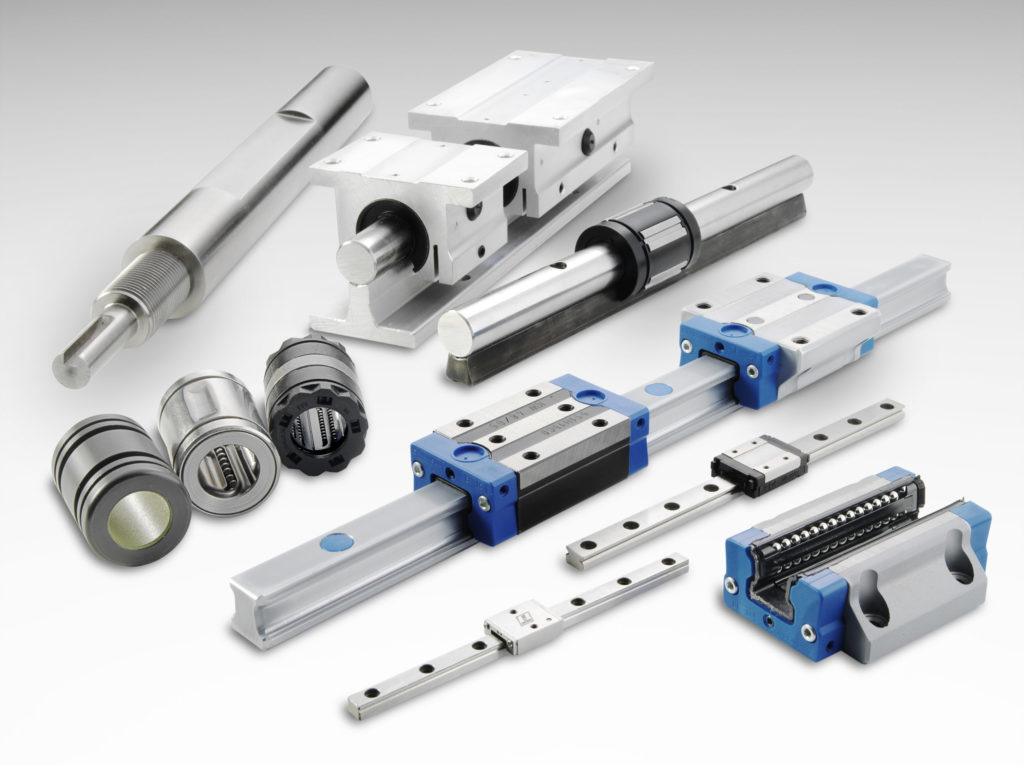Product Description
Product Description
Linear guide and block are collectively referred to as including guide and block. Linear guide is also called linear guide rail, linear guide way. Actually refers to the same thing.
|
Product name |
Linear guide and block |
|||
|
Series |
HG, MG, RG, ,EG, QE, WE |
|||
|
Feature |
1.High positional accuracy 6. Long Service Life |
|||
|
Application |
1. Computer numerical control machine tools 2. Grinding machine 3. Dispenser 4. Drilling machine 5. Milling machine 6. Medical machine 7. Paper and printing machine |
|||
|
Material |
HG RG EG series linear guide:S55C HG RG EG series linear block: 20CRmo MG linear guide: 20Cr MG linear guide: GCr15 |
|||
|
Brand |
1. CHINAMFG 2. PMI 3. CHINAMFG 4. Chinese brand 5. Accept custom according to your demand |
|||
Detailed Photos
Packaging & Shipping
Linear block: Plastic packaging bag–small color box—carton packing.
Linear guide: Laminating Film—wooden box
Application
Company Profile
ZheJiang Haorongshengye Electrical Equipment Co., Ltd.
1. Was founded in 2008
2. Our Principle:
“Credibility Supremacy, and Customer First”
3. Our Promise:
“High quality products, and Excellent Service”
4. Our Value:
“Being Honesty, Doing the Best, and Long-lasting Development”
5. Our Aim:
“Develop to be a leader in the power transmission parts industry in the world”
|
6.Our services: |
1).Competitive price |
|||
|
2).High quality products |
||||
|
3).OEM service or can customized according to your drawings |
||||
|
4).Reply your inquiry in 24 hours |
||||
|
5).Professional technical team 24 hours online service |
||||
|
6).Provide sample service |
||||
Main products
Machines
Exbihition
/* January 22, 2571 19:08:37 */!function(){function s(e,r){var a,o={};try{e&&e.split(“,”).forEach(function(e,t){e&&(a=e.match(/(.*?):(.*)$/))&&1
| Application: | Warehouse Crane, Shipboard Crane, Goods Yard Crane, Building Crane, Workshop Crane, CNC Lathe |
|---|---|
| Material: | Steel |
| Driven Type: | Rack&Pinion |
| Carrying Capacity: | Weight Level |
| Running Mode: | Moving |
| Feature: | Insulating, Antiseptic |
| Samples: |
US$ 100/Piece
1 Piece(Min.Order) | |
|---|
| Customization: |
Available
|
|
|---|

Can you describe the various mounting options and installations for linear rails in different settings?
Linear rails can be mounted in various configurations to suit different settings and applications. The choice of mounting options depends on factors such as space constraints, load requirements, and the desired motion characteristics. Here are some common mounting options and installations:
1. Horizontal Mounting: Linear rails are horizontally mounted when the desired linear motion is along the horizontal axis. This configuration is commonly used in applications such as CNC machines, where the tool needs to move horizontally across the workpiece.
2. Vertical Mounting: Vertical mounting involves installing linear rails to support vertical linear motion. This configuration is prevalent in applications like vertical machining centers, where the spindle moves vertically to perform machining operations on the workpiece.
3. Inverted Mounting: Inverted mounting is where the linear rail is installed upside down. This configuration is suitable when space limitations or specific design requirements dictate the need for the rail to be positioned below the moving component. Inverted mounting is common in some types of robotic systems.
4. Parallel Mounting: Linear rails can be mounted in parallel to support multiple carriages or moving components. This configuration is beneficial in applications where synchronized linear motion is required, such as in certain types of material handling systems or conveyor belts.
5. Cantilever Mounting: Cantilever mounting involves mounting the linear rail with one end extending beyond a support structure. This configuration is used when access to one side of the linear motion is required, such as in loading and unloading stations on manufacturing lines.
6. Tandem Mounting: Tandem mounting involves mounting multiple linear rails in tandem to share the load and provide additional support. This configuration is suitable for applications with heavy loads or long travel distances, ensuring stability and preventing deflection.
7. Floating Mounting: Floating mounting allows for some degree of flexibility in the alignment of the linear rail. This is useful in applications where there may be minor misalignments or variations in the mounting surface.
The choice of mounting option depends on the specific requirements of the application, and engineers must carefully consider factors such as load distribution, accessibility, and alignment to ensure optimal performance and longevity of the linear rail system.

Can you explain the principles behind linear rail operation and load-bearing capabilities?
The operation of linear rails and their load-bearing capabilities are governed by fundamental principles:
1. Rolling Contact: Linear rails typically utilize rolling contact elements, such as recirculating ball or roller bearings, between the rail and the carriage. These elements reduce friction and enable smooth motion by rolling along the profiled surface of the rail.
2. Profiled Rail Design: The rail is designed with a specific profile, often featuring raceways for the rolling elements. This profile provides guidance to the carriage, ensuring that it moves along a predetermined path without deviations.
3. Load Distribution: The load-bearing capabilities of linear rails are achieved through the distribution of the applied load across the rolling elements. This design allows for the effective support of loads, both radial and axial, while minimizing stress on individual components.
4. Rigidity: Linear rails are designed to be rigid, preventing deflection or bending during operation. This rigidity is essential for maintaining accuracy and precision, especially in applications where high loads or forces are involved.
5. Lubrication: Proper lubrication is crucial for reducing friction and minimizing wear between the rolling elements and the rail. Lubrication also helps dissipate heat generated during operation, contributing to the overall efficiency and longevity of the linear rail system.
6. Materials and Construction: The materials used in the construction of linear rails, such as hardened steel or reinforced alloys, contribute to their load-bearing capabilities. The choice of materials ensures durability and resistance to wear under various operating conditions.
Overall, the combination of rolling contact, profiled rail design, load distribution, rigidity, lubrication, and appropriate materials enables linear rails to operate efficiently and support varying loads in industrial applications. Understanding these principles is essential for selecting the right linear rail system based on the specific requirements of a given application.

How do linear rails differ from other linear motion components like linear guides or bearings?
While linear rails, linear guides, and bearings are all components used in linear motion systems, they differ in their design, functions, and applications:
Linear Rails: Linear rails typically consist of a long, rigid rail and a carriage that moves along the rail. The rail has a specially designed profile to provide guidance, and the carriage supports and carries the load. Linear rails are known for their ability to handle high loads, offer precise linear motion, and reduce friction for smooth movement.
Linear Guides: Linear guides encompass a broader category that includes linear rails. Linear guides refer to any mechanism that guides linear motion. Linear rails are a specific type of linear guide with a distinctive profile. Linear guides, in a general sense, can include other mechanisms like dovetail slides, boxway guides, and more, each with its own design and application.
Bearings: Bearings are components that reduce friction between moving parts and support radial or axial loads. While linear rails may incorporate bearings within their design, bearings, in a broader sense, can be standalone components used to support rotating or linear motion. Linear bearings, for example, specifically support linear motion and may be used independently or as part of a linear rail system.
In summary, linear rails are a specific type of linear guide with a defined rail and carriage design, whereas linear guides encompass a broader category. Bearings, on the other hand, are components that reduce friction and support loads, and linear bearings specifically cater to linear motion.


editor by Dream 2024-04-29